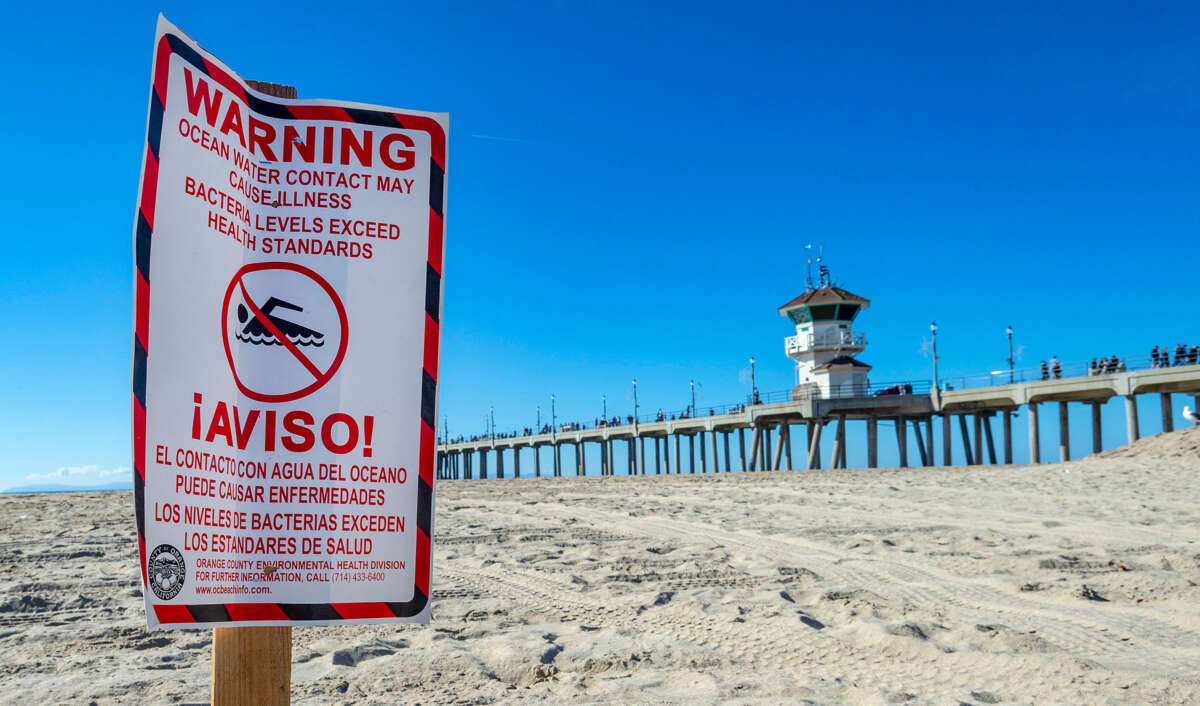Industrial facilities produce millions of pounds of hazardous chemical waste every year and dump it directly into U.S. waterways. Environmental advocates say the government isn’t doing enough to stop them.
A coalition of 13 green groups filed a lawsuit on Tuesday arguing that the Environmental Protection Agency, or EPA, has violated federal law by repeatedly failing to update regulations on water pollution for seven industrial sectors. Under the Clean Water Act, the EPA is required to set limits on the amount of pollution companies can discharge based on the best available technologies, and to revise those limits every five years.
For the industrial sectors highlighted in the lawsuit, however, pollution control standards haven’t been updated for an average of 34 years.
“For decades the EPA has let these dirty industries pollute our rivers and bays instead of making them keep pace with advances in technologies that tackle water pollution,” Hannah Connor, environmental health deputy director at the nonprofit Center for Biological Diversity, said in a statement. “EPA needs to bring pollution standards into the 21st century.”
Among the sectors highlighted in the lawsuit, filed in the U.S. Court of Appeals for the Ninth Circuit in San Francisco, are plastics molding, inorganic chemical production, and the manufacturing of pesticides and fertilizers. Effluent guidelines for these industries were last updated in the 1980s and ’90s, meaning companies have been allowed to dump contaminated wastewater without treating it with the most up-to-date technologies for pollution control. Organic chemical manufacturers, for example, release millions of pounds of nitrogen, benzene, and lead every year but haven’t seen updated discharge guidelines since 1993. It’s a similar situation for metal-making facilities, which released 100 million pounds of pollution into waterways in 2019. Their effluent guidelines were last updated in 1986.
Depending on the sector, there are also pollutants for which the EPA has never set any control standards — like phthalates, microplastics, and so-called “forever chemicals” from plastic-molding facilities.
The lawsuit comes about three months after the EPA published a 67-page review of its Effluent Guidelines Program. In the review, the EPA said it was taking action to control forever chemicals and pollution from slaughterhouses, but that it was “not prioritizing” updates for a number of other sectors — including those named in the environmental groups’ new lawsuit. The Environmental Integrity Project, the Center for Biological Diversity, and the other organizations said the group’s decision-making process was “fundamentally flawed.”
The EPA declined to comment on the pending litigation.
According to Jen Duggan, deputy director of the nonprofit Environmental Integrity Project, existing technologies for denitrification — widely used in municipal sewage treatment plants — could reduce some facilities’ total nitrogen discharges by up to 75 percent. She said the EPA could limit pollution from heavy metals and forever chemicals by requiring reverse osmosis and mechanical filtration technologies. “They don’t need to reinvent the wheel,” Duggan told Grist.
By failing to update pollution control standards for industrial facilities, environmental advocates say the EPA is putting people downstream at a greater risk of health problems, such as liver damage and cancer, particularly in low-income communities and communities of color that are already overburdened by other forms of industrial pollution.
“This is a story of social and ecological injustice that has perpetuated for generations,” Naomi Yoder, staff scientist for the Louisiana-based nonprofit Healthy Gulf, told reporters on Tuesday. She highlighted nitrogen and phosphorus pollution in the majority-Black districts of St. James and St. John parishes, where former slave plantations have given way to a dense concentration of oil refineries, plastic-making facilities, and other industrial activity. Every day, three of the area’s fertilizer plants dump some 13,000 pounds of nitrates each into the Mississippi River, potentially compromising drinking water supplies downstream and contributing to the deoxygenated “dead zone” that’s suffocating marine life in the Gulf of Mexico.
Duggan said it could take years for the EPA to reform its pollution control requirements, but urged swift action to keep up with an expected boom in industries like plastic manufacturing. “It’s important for the EPA to get this right,” she said. “These are not dying industries, they’re growing, and the impact is just going to get larger.”
Our most important fundraising appeal of the year
December is the most critical time of year for Truthout, because our nonprofit news is funded almost entirely by individual donations from readers like you. So before you navigate away, we ask that you take just a second to support Truthout with a tax-deductible donation.
This year is a little different. We are up against a far-reaching, wide-scale attack on press freedom coming from the Trump administration. 2025 was a year of frightening censorship, news industry corporate consolidation, and worsening financial conditions for progressive nonprofits across the board.
We can only resist Trump’s agenda by cultivating a strong base of support. The right-wing mediasphere is funded comfortably by billionaire owners and venture capitalist philanthropists. At Truthout, we have you.
We’ve set an ambitious target for our year-end campaign — a goal of $250,000 to keep up our fight against authoritarianism in 2026. Please take a meaningful action in this fight: make a one-time or monthly donation to Truthout before December 31. If you have the means, please dig deep.
